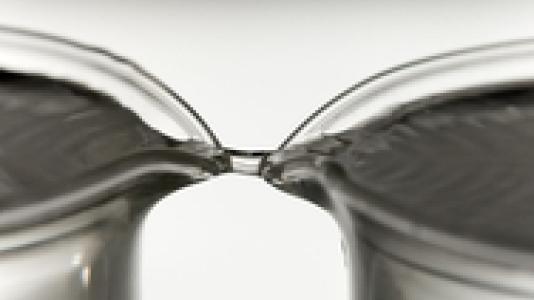
Fortunately, a new experiment performed at the Advanced Photon Source (APS) at the U.S. Department of Energy’s Argonne National Laboratory may shed light on the properties of the “flowing water bridge” and perhaps help resolve an old dispute about the physical nature of water.
Flowing water bridges are created when a large amount of electricity – around 15,000 volts – is applied through two electrodes placed in adjacent beakers of water. Once the electricity starts flowing, the water in one of the beakers creeps up the side and soon forms a thread-like bridge to the other one.
Prior experiments that looked at flowing water bridges tended to use optical techniques that yielded data only about the surface of the stream. This data supported a surprising conclusion: it seemed that the water molecules would line up in chains thanks to the influence of the electric field on their hydrogen bonds. “This would have been a very exciting result, because it would have shown water with a different physical structure than we’re used to seeing,” said Argonne physicist Chris Benmore, who helped lead the study.
With the added advantage of the high-energy X-rays generated at the APS, Benmore and his colleagues were able to probe the bulk of the bridge’s stream. But unlike the surface structure, most of the water showed no chaining or other change from water’s normal orientation.
“One of the powerful things about high-energy X-ray scattering is that you can take a lot of images along the bridge in a very quick time,” said Brookhaven National Laboratory chemist John Parise. “So we were looking specifically for alignments in the water molecules that were different from alignments of the molecules in liquid water. The result is that there’s really not much difference.”
One thing that the researchers did notice is that the water in the bridge tends to get quite hot as the bridge forms – in some cases exceeding 50 degrees Celsius (122 degrees Fahrenheit). According to Benmore, there have been cases in which boiling floating water bridges have formed.
“Using the APS and thermal imaging let us see how the temperature of the bridge changed over time,” he said.